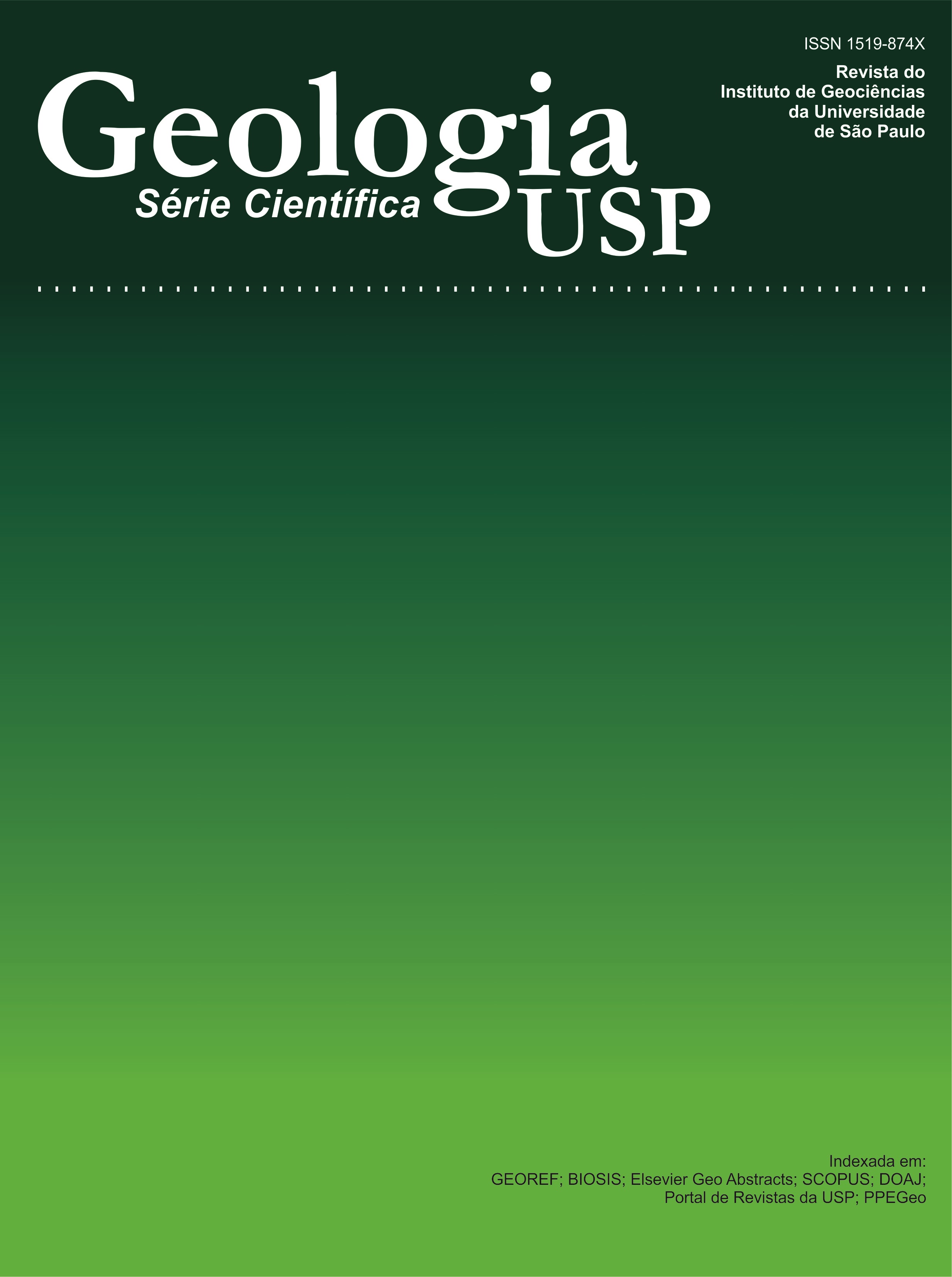The stratigraphic significance of the Solenoid Complex in the Permian of Gondwana
DOI:
https://doi.org/10.5327/Z1519-874X201400020008Abstract
The Solenoid Complex comprises a fossil wood assemblage with stratigraphic distribution restricted to the middle-late Kungurian, present in Western (Irati Formation, Paraná Basin, Brazil) and Eastern (Upper Barakar Interval of the Indian basins) Gondwana. Its occurrence seems to be related to the adaptation of certain plant groups to paleoenvironmental stress in lowland niches of coastal areas subject to salinity variation. The disappearance of these forms in the latest Kungurian is probably linked to the cessation of these conditions, which is confirmed by the sedimentary record. The here designated "Solenoid Complex Zone" correlates with the acme in diversification of striate and taeniate patterns especially in bisacatte pollen grains, but also in monosacatte ones, reflecting important tectonically and climatically driven changes in the vegetational pattern. The waning icehouse stage during the Permian was an important factor to the development of similar vegetation patterns in Western and Eastern Gondwana in the latitudinal belt of 40° - 55°.Downloads
Downloads
Published
2014-06-01
Issue
Section
Articles
License
Authors who publish in this journal shall comply with the following terms:
- Authors keep their copyright and grant to Geologia USP: Série Científica the right of first publication, with the paper under the Creative Commons BY-NC-SA license (summary of the license: https://creativecommons.org/licenses/by-nc-sa/4.0 | full text of the license: https://creativecommons.org/licenses/by-nc-sa/4.0/legalcode) that allows the non-commercial sharing of the paper and granting the proper copyrights of the first publication in this journal.
- Authors are authorized to take additional contracts separately, for non-exclusive distribution of the version of the paper published in this journal (publish in institutional repository or as a book chapter), granting the proper copyrights of first publication in this journal.
- Authors are allowed and encouraged to publish and distribute their paper online (in institutional repositories or their personal page) at any point before or during the editorial process, since this can generate productive changes as well as increase the impact and citation of the published paper (See The effect of Open Access and downloads on citation impact).
How to Cite
Guerra-Sommer, M., Degani-Schmidt, I., Mussa, D., Kavali, P. S., & Shivanna, M. (2014). The stratigraphic significance of the Solenoid Complex in the Permian of Gondwana . Geologia USP. Série Científica, 14(2), 139-148. https://doi.org/10.5327/Z1519-874X201400020008





